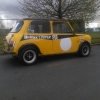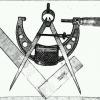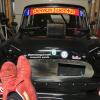They don't put these sorts of things in history books:-
80 years ago, Before the advent of high grade steel for valves, one of the rituals of motoring was "The Decoke".
Cleaning the burnt, coke-like, carbon from the combustion area was actually just a by-action to the refacing and lapping in of the valves, that was needed to stop pitted valves burning out.
It was also an opportunity to measure the bores, which was simply done by pushing a piston ring, progressively, down the bore and checking the gap with a feeler gauge.
If sufficient wear was detected, "Plus Two" pistons could be fitted. These were .002" oversize, had a lower top ring and were fitted without a re-bore, the glaze being honed with a device like a rubber jam jar with emery paper wrapped round it, inserted in the bore and inflated with a foot pump.
During the war, a set of pistons was almost unobtainable, so worn bores were dealt with by putting the pistons on a lathe and knurling them to "bring them up to size".
Edited by DeadSquare, 05 December 2018 - 12:25 PM.
























